
For many years there is this annoying succulent weed growing in our garden, that seems to thrive perfectly, even when every other weed forfeits the battle against the merciless summer heat. I didn't know what it was but also didn't really care until random curiosity struck and I did some research. Turned out the stuff is called purslane and actually has many beneficial traits.
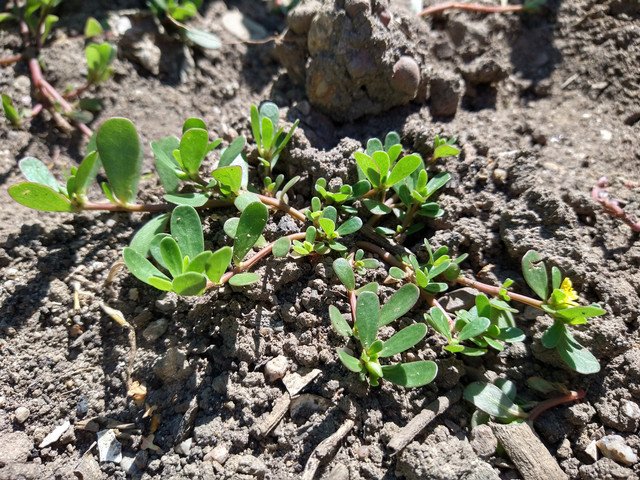
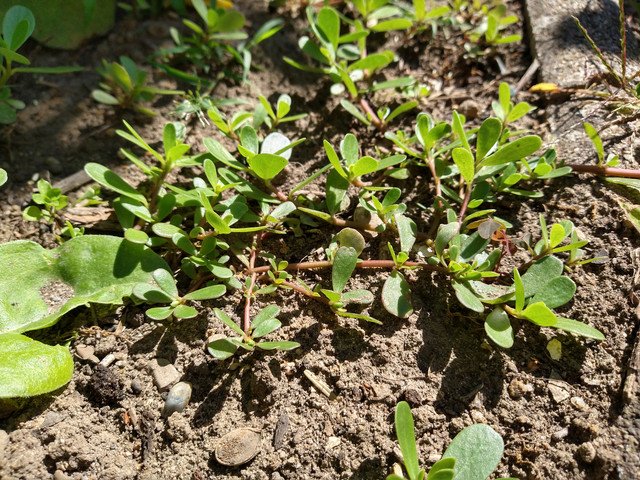
It's benefits as a companion plant
Due to their nature of growing flat on the ground, which is common for succulents, they also protect the soil from losing humidity and therefore benefit surrounding plants. Furthermore, on the strive for water their roots can penetrate deep into hard soil and assist weaker plants on their search for water and minerals.
If it get's too much, just eat it!
Purslane has been used in kitchens all over the world for millennia, but most people nowadays probably don't even know about it's existence. It's mostly used raw in salads but also as a thickening agent in soups or cooked like spinach.
Like most veggies it mainly consists of water but also contains 3% carbohydrates and 2% proteins. The most interesting ingredients of considerable amounts are omega-3 fats, vitamin C and E, as well as minerals and phytochemicals like saponins.
But also oxalic acid.
Oxalic acid is not incredibly bad. It can also be found in rhubarb, spinach and tea, but large quantities can cause calcium oxalate to form in your kidneys, which is commonly known as kidney stones.
So in order to avoid the painful encounter with said gems, the intake of citric acid is advised when consuming purslane and other oxalic-rich food, as it prevents the formation of calcium oxalate. People with kidney issues should stay away from oxalic acid alltogether.
Cooking with purslane
Luckily citric acid can be found in all kinds of fruits, particularly lemons - a perfect fit for todays recipe, that also makes good use of the numerous tomatoes and cucumbers growing in the garden:
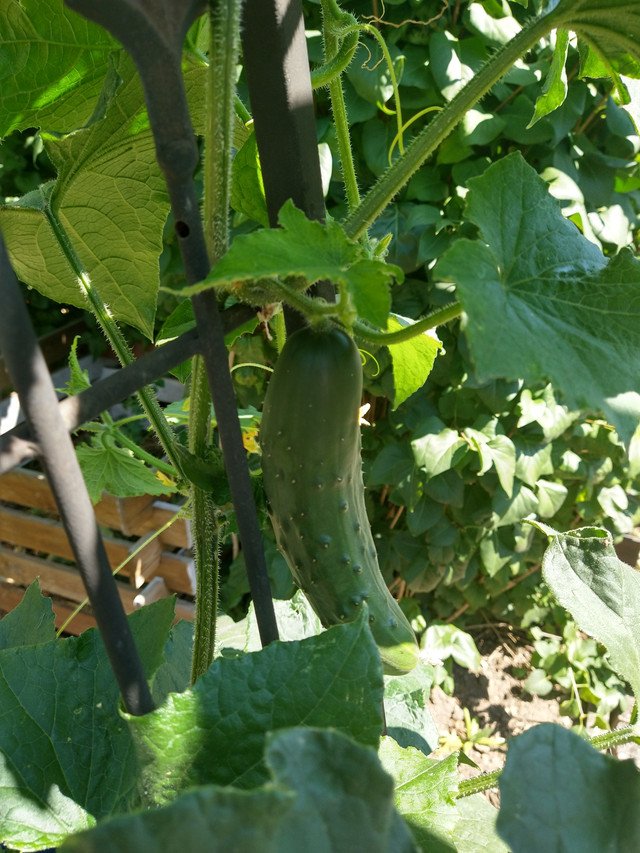
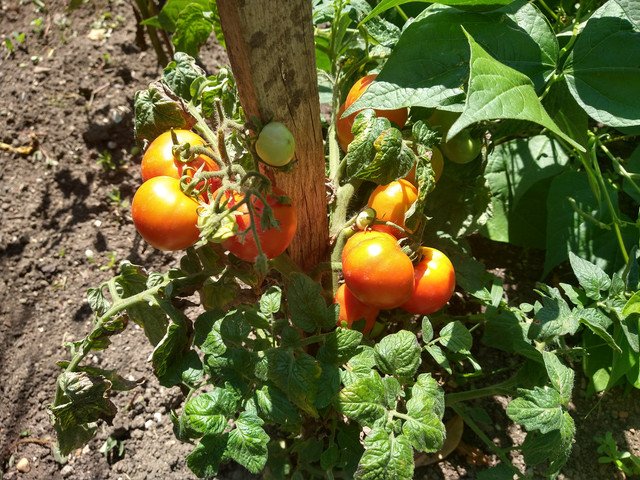
Greek salad with purslane
- Cucumber
- Tomatoes
- Red Pepper
- Onion
- Feta
- Purslane
- Olives
- Basil (or your favorite summer herbs)
Chop it up and put in bowl. Simple.
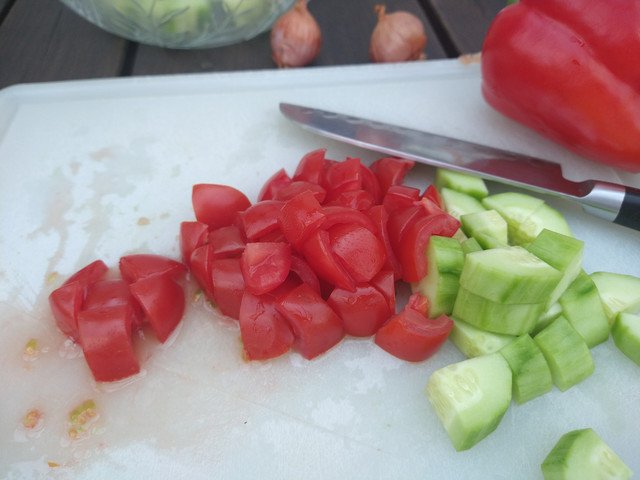
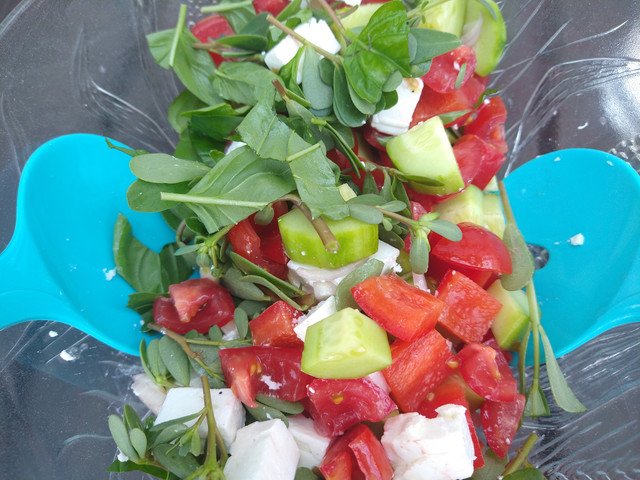
For the dressing:
- Salt & Pepper
- Lemon Juice
- Olive Oil
Mix well and pour in same bowl you put the veggies and Feta in. Not any other bowl. Very important!
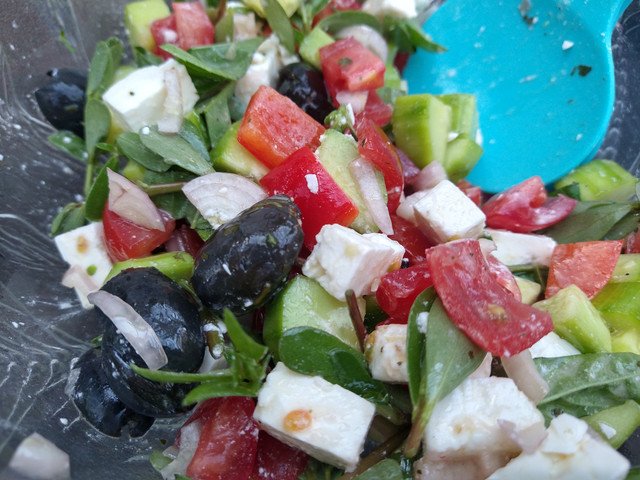
The purslane has a nice, crisp consistency and a slightly sour taste. A perfect, refreshing salad for hot summer days. Best paired with a cold shandy.
If you found this in your garden already, consider giving it a try. Just don't sow it on purpose - you will never every get rid of it again. 😉
By the way: Another common garden weed that can be used in a similar manner is chickweed. Not my favorite, though.
I know this one! It grows around here too and I do use it sometimes in salads.
I know people also add it to soups.
Weeds are good :D
Looks absolutely delicious.
Wow, I never thought this herb was edible. I'll take your advice and make a delicious salad.